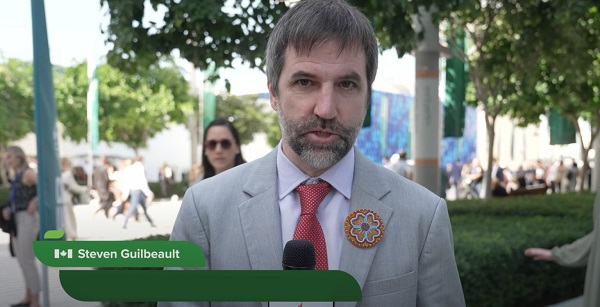Crime
Project Sleeping Giant: Inside the Chinese Mercantile Machine Linking Beijing’s Underground Banks and the Sinaloa Cartel

U.S. surveillance image shows one of Sai Zhang’s top lieutenants crossing into Mexico with a money courier for the Sinaloa cartel. The photo revealed critical ties between Zhang’s transnational money laundering and drug trafficking operation and one of North America’s dominant fentanyl distributors.
 Sam Cooper
Sam Cooper
Former senior DEA official describes covert global financial ecosystem tying Chinese students, Sinaloa fentanyl sales, cartel cash collection, and PRC state-linked infrastructure deals.
In January 2021, a grainy black-and-white surveillance photo quietly accelerated one of the most consequential geopolitical investigations in recent times — a case with influence over border security, trade policy, and tariff disputes shaping our era.
Captured at the U.S.-Mexico border, the image showed a thick-set Chinese man wearing a COVID-era face mask driving alongside a Mexican man — a key money launderer for the Sinaloa cartel. The Chinese man turned out to be a senior operative working for Sai Zhang, a younger Chinese international student living in the United States on a student visa.
To a small group of U.S. federal agents, the photo revealed a thread they had been painstakingly unraveling since 2018, part of an ongoing investigation known as Project Sleeping Giant.
The overarching task force, launched by senior DEA agent Don Im — whose career was built on decoding China’s paramount role in global money laundering and supply of chemicals used to produce methamphetamine and fentanyl — aimed to bring cases against Latin cartels working with Chinese money launderers.
This photo was the first concrete step toward proving a direct, operational bridge between Chinese underground banking networks and the blood-soaked heart of Mexico’s most notorious cartel.
While evidence of Sai Zhang’s commanding role in orchestrating Sinaloa fentanyl cash flows was stunning, the involvement of Chinese student networks followed its own curious logic, Im explained in an interview.
“Chinese banking networks were operating in the U.S. long before Zhang linked up with the Sinaloa cartel,” Im said, describing the system in which Chinese buyers bid on pools of drug cash collected in cities worldwide, paying a premium to receive laundered dollars in American locations and investments of their choosing. “The buyers were mostly wealthy Chinese seeking dollars for real estate or tuition in America. Payments were made in yuan through Chinese accounts. In return, Mexican cartels received goods or cash.”
In exclusive interviews, Im revealed in unprecedented details the breathtaking complexity of China’s global drug money laundering networks — a system of Byzantine paths that Sleeping Giant helped map and penetrate. The troubling implications help explain why Washington is now imposing trade sanctions targeting China and countries deeply entwined with its export-driven economy.
At the heart of it, Beijing’s centralized economic apparatus and the Chinese Communist Party’s regional governors knowingly align with global drug barons — channeling fentanyl cash, reintegrating it into China’s factory output, and exporting drug-funded “legitimate” goods worldwide. Meanwhile, Chinese immigrants and travelers access the other side of this narco-banking system, using it to bankroll overseas investments and strengthen the reach of the Chinese diaspora.
It is a system that works for China’s government and citizens alike — on the micro level, it pays for tuition and housing for Chinese students in America; on the macro level, it helps fund Xi Jinping’s Belt and Road infrastructure projects abroad, designed to bind other states more closely to China through trade, debt, and ultimately elite corruption. According to Im, the chemical precursors fueling the production of fentanyl, methamphetamine, and ecstasy in parts of Europe — as well as in countries like Canada and Mexico — are woven into this Belt and Road system.
“Their Belt and Road Initiative is now in over a hundred-and-some-odd countries — with ports, airports, shipping lanes, roads, highways, trains. And all of China’s precursor chemicals are being offloaded,” Im said. “Right now, China’s economy is in dire straits, and they’re looking for capital to pay off debt, fund projects, make investments, or transfer wealth out of China. And that’s huge business. It involves provincial authorities engaged in various organized crime activities, including bribery, intimidation, kickbacks, and providing tariff breaks to known illicit drug and chemical suppliers.”
Don Im has testified on these findings before Congress, and related U.S. government investigations have shown that Beijing provides tax incentives to fentanyl factories.
As Sleeping Giant revealed, a critical cog in Beijing’s Trojan horse system is the Chinese student visitor — exemplified by figures like Sai Zhang.
The Bureau is a reader-supported publication.
To receive new posts and support my work, consider becoming a free or paid subscriber.
The Student Banker
Sai Zhang arrived in the United States on a student visa. By the late 2010s, he had quietly transformed himself into a key broker in a vast underground banking network centered in Southern California. His customers were wealthy Chinese nationals circumventing Beijing’s strict $50,000 annual foreign exchange cap.
Zhang’s operation was deceptively elegant. He tapped into the surplus of U.S. dollars held by Mexican drug cartels from opioid-ravaged eastern states such as North Carolina to cartel-influenced streets in Los Angeles. The Sinaloa drug barons, flush with cash from fentanyl, meth, and cocaine sales, needed a discreet and cost-effective way to convert their U.S. dollar profits back into pesos in Mexico.
Zhang’s network — as is true for all Chinese money brokers — clipped both sides of the ticket, offering direct or indirect services to Mexican cartels, Chinese factory producers, Chinese diaspora retailers across Europe and the western hemisphere who sell Chinese goods, and Chinese citizens seeking to import their yuan-denominated wealth, receiving non-traditional banking payouts in American cities.
So Zhang bought the Sinaloa cartel’s fentanyl cash dollars at a discount, resold them at a premium to Chinese buyers, and closed a loop that turned violent, street-level drug cash into fuel for China’s GDP.
But for U.S. prosecutors working alongside DEA street teams, what had long been known by detectives since the landmark case of Mexican-Chinese methamphetamine baron Zhenli Ye Gon—that is, the deep integration between Chinese and Mexican narco networks—still had to be painstakingly proven in court.
For Sai Zhang, this meant cutting through a labyrinth of protective layers carefully constructed to shield elite money brokers from exposure.
As described in voluminous U.S. court records—and corroborated in detail by Don Im—Zhang relied on a sophisticated chain of cash couriers, brokers, and money mules to keep himself insulated from street-level narcotics transactions. DEA surveillance teams tracked network operators to numerous cash stash houses and clandestine parking lot exchanges, often coming tantalizingly close yet narrowly missing opportunities to link Zhang’s cash directly to drug shipments.
One example is detailed in the affidavit of lead investigator Steven Gonzales. Surveillance teams tracked Xuanyi Mu and Hang Su from the “Naomi Avenue” stash house in Arcadia to a parking lot, where they met Elizabeth Sevilla-Mendoza, a known narcotics courier. Su collected an orange tote bag from her before returning to her black Mercedes-Benz. Officers then directed a traffic stop and deployed a K-9 unit, which alerted to the scent of narcotics on the bag. Inside, agents discovered $34,000 in foil-wrapped cash, neatly stacked and bound with rubber bands.
But within 48 hours of seizing this cash, Zhang’s team shut down the Arcadia stash house, leaving DEA investigators without the drug seizure they needed and cutting off a valuable surveillance node.
The first major break came on October 18, 2022. Acting on a tip from DEA agents in Charlotte, North Carolina, investigators in California zeroed in on a supermarket parking lot in San Gabriel. A wiretap on a Chinese suspected narco in North Carolina named “Mimi” indicated that Sai Zhang had arranged to pick up a $300,000 drug cash payment outside the San Gabriel grocery. Hours later officers watched as a woman in a sleek blue Maserati leaned out and took a black bag — containing about $300,000 in cash — from the driver of a white Ram truck, a Hispanic man.
Gonzalez was well prepared, having spent months quietly briefing local police departments across Los Angeles County on the finely honed clockwork of the Chinese student’s network.
When the DEA called for backup, San Gabriel police launched. They tailed the big Ram truck for hours, weaving through LA’s dense murk until the truck finally stopped in a Compton parking lot. There, the driver transferred two boxes from a silver sedan into his truck. Moments later, officers swooped in, seizing 50 kilos of cocaine — concrete proof that the Chinese money trail led directly to narcotics.
Meanwhile, Steven Gonzalez, DEA’s lead detective, shadowed the blue Maserati east, far from Compton’s industrial edges, finally arriving in Temple City — a quiet suburban enclave in the western San Gabriel Valley, known for its large Chinese community and discreet residential streets. There, a person emerged with a bag and passed it to two women waiting in a car. When officers stopped her car, they found $25,000 in cash — dollars procured through Sai Zhang’s underground WeChat-based cash exchange.
The DEA team ultimately traced the white Ram truck — along with the same silver sedan that had delivered 50 kilos of cocaine to the Ram’s driver — back to a drug stash house in Rowland Heights. In December 2022, they intercepted another driver leaving that residence, seizing $500,000 in cash.
The next link in the Chinese-Sinaloa drug money chain closed the circle—from, in a sense, the Chinese student boss, Sai Zhang, down to his foot soldiers: Chinese exchange students in the United States, lured by the promise of easy spending money, and recruited through WeChat message boards to serve as money mules for organized crime.
These same students come from a vast pool of families whose North American tuition payments are themselves financed with laundered drug proceeds, weaving them even more tightly into fentanyl’s financial web.
A cinematic moment came on April 10, 2023. In the evening dusk officers watched a grocery bag of cash drop from a balcony belonging to one of Sai Zhang’s lieutenants. A Chinese man seen nervously pacing the sidewalk waiting for the bag drop scooped it up and drove off in a black Range Rover.
The Range Rover wound through Los Angeles, stopping at another pickup before heading to a quiet house in North Hills. There, the driver handed two bags to a tall young Chinese man — notable for his studious wire-frame glasses — waiting at the door.
Around midnight, officers knocked. An older woman nervously answered and led them to a bedroom. She told the officers she offered boarding to international exchange students. Under the bed, they found two grocery bags stuffed with $60,000 cash. The room belonged to a Chinese high-school student boarding in the home — a ground-level player in a global money chain, perhaps only vaguely aware, if at all, that their willingness to take “easy” money jobs in a parallel Chinese economy is driving overdose deaths and an overdue crackdown by American lawmakers.
In his affidavit, Steven Gonzales boils down the transnational model exposed by Zhang’s case in these terms: One method by which a Chinese businessman might purchase real estate in Los Angeles—while evading China’s strict currency export controls—involves acquiring U.S. dollars through an underground exchange. To do so, the businessman effectively “buys” dollars from a broker like Zhang who supplies drug cash already circulating in the United States.
In this arrangement, the Chinese investor transfers an equivalent amount of Chinese currency into a designated account in China controlled by the Mexican cartel. Once secured, those funds can then be used—legitimately on the surface—to settle debts owed by the cartel to Chinese manufacturers.
“The money in that account in China can legally be used to pay off legitimate debts to Chinese manufacturers who ship goods to Mexico,” U.S. court filings in Zhang’s indictment say.
The goods are shipped to Mexico, the DEA affidavit continues, where they are sold in the local market. The resulting pesos represent the final value of the drugs initially smuggled and sold in the United States, thereby closing the loop on the cartel’s illicit earnings and providing the Chinese investor with clean dollars to invest in U.S. assets.
Through this intricate scheme, the Chinese businessman successfully acquires the dollars needed to finance his Los Angeles property, while the Mexican traffickers are reimbursed for their American drug revenues.
Gonzales says that this scheme, known as trade-based money laundering, exploits legitimate international trade flows to conceal the movement of criminal proceeds—allowing transnational crime networks to move drugs across borders and launder and reintegrate illicit gains under the appearance of lawful commerce.
Invite your friends and earn rewards
The Belt and Road Driver: Don Im’s Analysis
For Don Im, the story of Zhang is far from new — just another chapter in a book he knows better than almost anyone. “We saw this going back to 2007, during the Zhenli Ye Gon era,” Im said. “It’s a bidding war. Whoever offers the highest price gets the drug dollars from North America and Europe.”
After listening to Don Im in hours of taped interviews, a metaphor suggests itself. China’s grip on the global economy — its underground and aboveground systems at work — is unimaginably complex. Black and white appear divided, but in fact are not. Like an Escher image maze, cash flows up, down, sideways — enters, exits, integrates, vanishes, reappears, reiterates. No exit, no end. A labyrinth of lies.
For this deep-dive story — to help explain the consequences to Western lawmakers, business leaders, and citizens affected by the fentanyl death crisis — Don Im provided sensitive details illustrating the scale and depth of money laundering and financial integration stemming from this narco economy.
“So you’re not seeing a direct, linear transfer of drug proceeds directly into China. You’ll see bulk cash being shipped. You’ll see money that’s placed and laundered within Canada or in the United States through local businesses. Then those funds are pulled into other accounts or investment vehicles—cryptocurrency, other so-called high-value assets, businesses, brick-and-mortar companies. And then they’re all sold again—homes as well.
And what’s that done? It’s offset with transfers of commodities that are equivalent to the millions of dollars or euros that are shipped from various companies in Guangzhou, where now you have, in those regions, thousands of Mexicans, Panamanians, and Colombians living and operating as their own diaspora with those Chinese manufacturing companies. Those companies are receiving orders from the Chinese businessmen in Mexico, Canada, Panama, Vancouver—requesting shipments of textiles, clothing, electronics, everyday products that the Chinese manufacture and we buy here and throughout the world.
And those are all equivalent to the amount of drug proceeds that the Chinese businessmen are buying in drug consumer countries. When I say North American consumer nations, I include Canada. Vancouver probably has the highest per capita overdose death rate in the world—the policy is insane there. So it’s essentially an indirect, asymmetric transfer of funds and value that has no direct correlation with, or link to, the drug proceeds that are generated off the streets—the heroin, the cocaine, the fentanyl, the marijuana, the methamphetamine.”
“They’ll deposit it into businesses and restaurants, and they’ll deposit those funds commingled with the legitimate funds they generate daily from restaurants, gas stations, convenience stores. And those will be deposited into numerous banks. Then the real drug proceeds—the profits—are transferred into a number of core accounts and pooled there. At that point, the owner in Mexico, Colombia, or Panama will decide where to send the money—to other accounts he controls.
Then he’ll go on WeChat and essentially enter one of those rooms—an auction for dollars. He’ll say, “Hey, listen, I’ve got a million in Vancouver, a million in New York, a million in Chicago—who wants to buy these?” And then you have Chinese citizens in China who are looking for dollars… to get their wealth out, or to pay off debt, or to get their kids into school elsewhere, or even to buy U.S. or Western products to ship into China. So they’ll bid—and they’ll pay a premium. Because what they’re doing is getting instructions to buy, say, a million dollars’ worth of commodities valued in Mexico, but in China it’s worth $800,000.”
Then the next time the cartel guy comes in and says, “Hey, I’ve got a million euros in Milan, Italy,” guess what? The Chinese businessman has the pesos to transfer to the cartel. So the Chinese businessman will pay $1.1 million—or a million dollars’ worth of renminbi or yuan—to ship internally in China to the manufacturing companies for all the commodities to be shipped to Mexico.
And once that’s shipped and the Chinese-Mexican businessman is satisfied with what he got, then he’ll say, “Okay, what do you want to do with the money in New York City?”
The Chinese businessman goes, “I want to look at a bunch of properties. I want you to send $200-some-thousand to New York University under the name of my son or nephew or niece.”
For those who might believe that China’s leaders are unaware of the global WeChat cash brokerage system — and its direct inputs into the Chinese factories powering Beijing’s mercantilist economy — Don Im offers a sobering set of facts.
“I brought it all together because I was running DEA’s money laundering operations at Special Operations Division, supporting undercover ops across the agency. DEA agents and analysts going back to the 2000’s tracked Mexicans and Colombians selling dollars to Chinese buyers. And they shared evidence with China law enforcement in circa 2012-2014.”
Im described even traveling to Beijing himself to brief the Ministry of Public Security.
“I personally went to Beijing in 2017, briefed top Ministry of Public Security officials. They listened when I explained how Chinese citizens use WeChat to buy drug dollars and then pay manufacturers in China to ship goods to brokers in Mexico. That was how the exchange happened.”
The Bureau is a reader-supported publication.
To receive new posts and support my work, consider becoming a free or paid subscriber.
The Most Powerful People in the World
On June 26, leading Mexican cartel reporter Ioan Grillo posted this message to X: ‘You follow drugs, you get drug addicts and drug dealers. But you start to follow the money, and you don’t know where the f—k it’s gonna take you’ — from The Wire,” Grillo explained, “but also relevant to the historic orders by the U.S. Treasury against three Mexican banks, issued yesterday.”
Under the leadership of Treasury Secretary Scott Bessent, the U.S. formally sanctioned CIBanco, Intercam Banco, and Vector Casa de Bolsa on June 25, designating them “financial institutions of primary money-laundering concern.” The move effectively cuts these banks off from the U.S. financial system, citing their roles in laundering millions of dollars on behalf of Mexico’s most powerful cartels and facilitating payments for fentanyl precursor chemicals imported from China. The designations mark the first major use of new powers under the Fentanyl Sanctions Act.
For Don Im, this kind of action is long overdue — and, in his view, could probably go much farther and higher, into very discomforting areas for some world leaders.
A file called “Operation Heart of Stone” is illustrative. Im says he designed and ran this U.S. undercover operation targeting Horacio Cartes, Paraguay’s former president, who was accused of deep involvement in drug trafficking and money laundering. A 2010 U.S. State Department cable — leaked by WikiLeaks and derailing Heart of Stone’s momentum — labeled Cartes as the head of a major drug trafficking and laundering network. But, as Im points out, “we still got HSBC and hit them with a $1.9 billion fine.”
Speaking about this case and his decades spent infiltrating the world’s most dangerous criminal and financial networks, Im offered a set of opinions that — while carefully worded — amount to a kind of manifesto on who should be held accountable for opioid death tolls, and how to confront the system enabling them.
“Throughout the 1980s and 1990s, the DEA and US Customs (HSI) and IRS, had conducted numerous undercover money laundering operations against the drug cartels. Massive cash generated on the streets of North America and Europe were being deposited into thousands of banks,” Im said. “As a result, numerous anti-money laundering legislation efforts were implemented costing banks billions of dollars in compliance. At the same time, DEA, IRS and US Customs agents, established these money laundering operations by posing as money launderers and bankers to infiltrate the drug cartels.”
“These operations allowed law enforcement a door into the global underground banking system,” he continued. “DEA, USCS, IRS agents were able to track drug proceeds into the murky world where dirty cash was being cleaned by a global network of banks, businesses, law firms, NGO’s, corporations, offshore havens, philanthropic organizations, and reappearing into the accounts of corrupt government and politicians, millionaires and billionaires and their families.”
According to Im, it was DEA operations such as Swordfish, Pisces, Green Ice, Polar Cap, Casablanca, as well as Heart of Stone, Titan, and Green Treasure, that helped law enforcement capture evidence and intelligence into how the global system operates — with Sleeping Giant and Sai Zhang’s Chinese student and Sinaloa Cartel nexus being the latest sweeping case proving Im’s point.
“These investigations and similar investigations, led DEA to better understand how Chinese Money Laundering Organizations were leveraging trade, commerce, banking, technology and corruption to create a system of global bartering and unofficial banking,” Im said. “By using money to lure bad guys, and following the money upstream, DEA was able to seize billions of dollars of drug cash, seize and forfeit billions of dollars in assets purchased with drug proceeds, and even fine major banks such as Bank of America, Citibank, HSBC, Standard Charter, TD Bank, Wells Fargo, and many more. However, less than a handful of bank executives have ever been indicted and sent to prison.
Even with evidence, bankers, lawyers, accountants and politicians skirted prison sentences, while the low-hanging fruit drug traffickers were indicted and arrested. The judicial system is discriminatory when it comes to wealth, status and political convenience.”
The Bureau is a reader-supported publication.
To receive new posts and support my work, consider becoming a free or paid subscriber.
Invite your friends and earn rewards
Crime
The “Strong Borders Act,” Misses the Mark — Only Deep Legal Reforms Will Confront Canada’s Fentanyl Networks
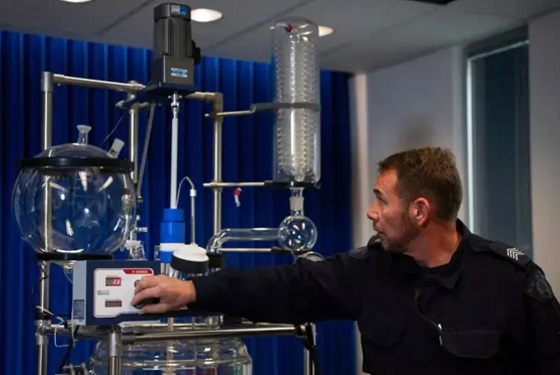
The fallout is a grim roll call of major investigations that collapsed before trial in British Columbia, Alberta, Ontario, and Quebec: Project E-Pirate, E-Nationalize, Syndicato, Cobra, Brisa, and Endgame all aborted.
Bill C-2, Ottawa’s so-called “Strong Borders Act,” promises to secure Canada’s frontiers with new surveillance powers, sweeping ministerial discretion, and higher penalties. But as veteran Canadian investigators know, the bill misses the point. It is an omnibus solution that expands the state’s reach online, while leaving untouched the very legal choke points that have made Canada a permissive financial platform and fentanyl laboratory for cartels, Triads, and state-linked terror networks.
For more than a decade, Canadian and U.S. enforcement leaders have pointed to the same failures. Police are confronting transnational fentanyl labs, a flood of Chinese chemical precursors, Hezbollah-linked laundering, and Mexican cartels setting up on Canadian soil.
Yet they are forced to fight these threats with laws “never designed for today’s criminal landscape,” as Canadian Chiefs of Police president Thomas Carrique recently warned.
Former RCMP investigator Calvin Chrustie testified before British Columbia’s Cullen Commission that, due to judicial blockages arising from Charter of Rights rulings, by 2015 it had become effectively impossible to obtain wiretaps on Sinaloa Cartel figures in Vancouver.
This year, RCMP Assistant Commissioner David Teboul said a proliferation of “commercial-grade chemistry” fentanyl labs in British Columbia — like the sophisticated factory dismantled last year in Falkland, north of Lake Okanagan, where Mexican cartels have quietly taken over domestic biker gang networks — underlined the urgent need for legislative reform.
Canada wasn’t always so overwhelmed by lethal foreign gangs. What happened? Overly permissive immigration rules and porous borders explain part of the story, but the deeper problem lies in the laws that have steadily eroded enforcement power since the early 1990s.
Instead of enabling prosecutions against transnational traffickers of humans, narcotics, and weapons, unintended consequences from misguided jurisprudence surrounding Canada’s Charter of Rights now ensure these cases almost always collapse, or are simply avoided by the Crown.
Two Supreme Court rulings — Stinchcombe and Jordan — have gutted the capacity to prosecute complex crime. Stinchcombe requires exhaustive disclosure of sensitive intelligence, often impossible in Five Eyes investigations that depend on close cooperation between Canada and the United States.
Jordan imposes strict trial ceilings that tick down while Stinchcombe disclosure battles drag on. Criminal lawyers know these two rulings function as trump cards stacked in favor of their clients.
The fallout is a grim roll call of major investigations that collapsed before trial in British Columbia, Alberta, Ontario, and Quebec: Project E-Pirate, E-Nationalize, Syndicato, Cobra, Brisa, and Endgame all aborted. Project Collecteur — a landmark probe linking Hezbollah and foreign terror-financing networks across Canadian cities to transnational drug money laundering, built on U.S. and Australian intelligence — barely made it to court, despite its far-reaching implications.
It was crippled by RCMP corruption and by underfunded, risk-averse agencies that abandoned Canadian leads painstakingly developed by Five Eyes partners.
How bad was it?
Farzam Mehdizadeh, a major Iranian money launderer and suspected weapons proliferation actor who ran a Toronto currency exchange while shuttling bags of drug cash between Toronto and Montreal, escaped back to Iran just as the RCMP was poised to arrest him on money-laundering charges. The beneficiary of a leaky national police force, evidently.
A senior U.S. enforcement source told The Bureau that during Project Collecteur, the RCMP stumbled onto an even bigger Chinese money launderer while probing Iranian networks, but the agency ignored the file — reportedly unable to shift its original investigation focus onto new enterprise targets.
These kinds of policing failures and decisions are part of the reason President Donald Trump has said senior U.S. investigators told him that Canada lacks the resources and capacity to confront fentanyl trafficking gangs.
In Washington, there is frustration — and at times a lack of understanding — that Stinchcombe either bars or effectively scares the Mounties out of cooperating with U.S. agencies or sharing intelligence.
Derek Maltz, former DEA chief under President Trump, pointed to the Falkland fentanyl super-lab case — part of a U.S.-led probe into Chinese precursor suppliers — as the latest example of “historical issues with the RCMP not sharing properly,” calling it a “major disaster that happened on that big lab in British Columbia.”
“It goes down to the basic information sharing, the antiquated laws,” Maltz said. After meeting with current Canadian police leadership, he concluded: “They’re so far behind and the laws are so antiquated and so archaic.”
The cost is staggering. Officers walk away from enterprise files, knowing they cannot meet disclosure or trial deadlines. Prosecutors refuse to take high-risk cases. U.S. agencies stop sharing intelligence that could be exposed in open court. Canada defaults to “low-hanging fruit” prosecutions while the upper echelons of global networks operate with near impunity.
Meanwhile, at the border, permissive Non-Resident Importer rules allow foreign entities to move chemical precursors through Canadian ports under layers of corporate opacity. Chinese logistics hubs repackage bulk fentanyl shipments bound for Vancouver, obscuring Canada’s visibility into their true origin. Once in Canada, packages can be collected by foreign nationals who further conceal their identities. To visualize the scheme, think of an “end-to-end encryption” app — Chinese trafficking networks enjoy the same kind of seamless concealment when shipping narcotics into Canada.
At the same time, Vancouver’s port — stripped of federal police under Jean Chrétien’s Liberal government — has container inspection rates below one percent, according to a British Columbia study.
It doesn’t seem that Bill C-2 will do anything to address these core vulnerabilities. It gives Ottawa broad powers to expand online surveillance, which may help with the drug networks that now brazenly advertise street sales on social platforms. But it would do so by subjecting all Canadians to invasive cyber surveillance. The bill does not target the transnational criminals who are already easy to identify and well known to law enforcement. These networks continue to operate openly in Canada, confident that the Charter shields them from real prosecution.
Meanwhile, experts warn that parts of C-2 resemble Ottawa’s wish list of new powers tossed into a grab bag. The effect is the opposite of inspiring public confidence or addressing the real enforcement crisis. As written, Bill C-2 could do more harm than good. Mark Carney’s government should shelve it and start again with the reforms Canada actually needs.
The Bureau is a reader-supported publication.
To receive new posts and support my work, consider becoming a free or paid subscriber.
Crime
Drug trafficker says Trump battle with the cartels is making an impact
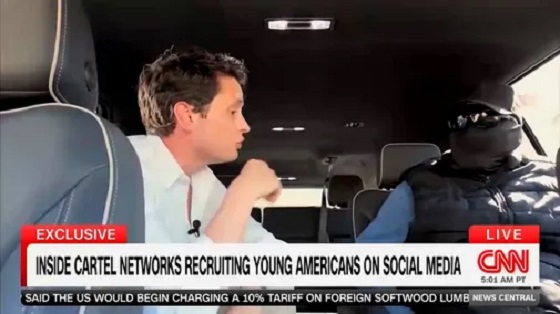
Quick Hit:
A Sinaloa Cartel leader told CNN that President Trump’s border crackdown has made cartel operations “much tougher,” admitting the gang’s smuggling business has been disrupted by the administration’s hardline approach.
Key Details:
- CNN correspondent David Culver interviewed the masked cartel member in the back of an SUV. The man — clad in black clothing, gloves, and sunglasses — conceded that Trump’s policies have made his criminal work harder, responding flatly, “Oh yeah. Yeah.”
- He said Trump’s border enforcement has disrupted cartel routes and made smuggling riskier, limiting the group’s ability to operate freely.
- The trafficker, who admitted to killings and cross-border crimes, said he wanted to warn others, telling CNN, “It’s not a life. It’s not good… Once you get in, you can’t get out.”
A member of the Sinaloa Cartel — responsible for trafficking untold amounts of deadly drugs into our country — says President Trump has unquestionably made his job tougher.
The Trump Admin will not relent until this evil has been eradicated from our country once and for all. pic.twitter.com/1dNYEHlyQi
— Rapid Response 47 (@RapidResponse47) September 30, 2025
Diving Deeper:
In a rare on-camera interview, a senior figure in Mexico’s Sinaloa Cartel — once run by Joaquín “El Chapo” Guzmán — acknowledged that President Donald Trump’s border and immigration crackdowns are taking a toll on cartel operations. CNN’s David Culver conducted the shadowy interview in the back of an SUV, describing the man as a hardened killer who has “done it all — from killing to coordinating smuggling operations.”
Asked directly if Trump’s border actions have made his job more difficult, the man didn’t hesitate. “Oh yeah. Yeah,” he replied. When Culver pressed further, he added, “Yep.” His matter-of-fact admission underscored what many border agents have long said — that Trump’s aggressive policies are slowing cartel activity and making it costlier, riskier, and far less predictable.
CNN noted that under Trump’s enforcement posture, major smuggling routes have been cut off or heavily monitored, forcing traffickers into less profitable, more dangerous corridors. Those operational disruptions have led even cartel insiders to acknowledge the effectiveness of U.S. countermeasures.
Despite his own record of violence, the masked trafficker told Culver that he wanted to deter others from following his path. “It’s not a life. It’s not good,” he said in broken English, before warning in Spanish, “Once you get in, you can’t get out.”
The man’s comments echoed those of former Sinaloa operative Margarito “Jay” Flores Jr., who told Fox News last month that Trump’s “aggressive approach” would “send a strong message to every drug trafficker across Latin America.” Flores, who worked under El Chapo’s network, said the Trump administration’s actions had already shaken criminal supply chains across Mexico and Central America.
That aggressive campaign appears to be continuing. NBC News recently reported that U.S. forces are preparing operations targeting cartel-linked trafficking hubs inside Venezuela — part of a broader strategy to dismantle networks at their source.
Taken together, the admissions from cartel veterans and the administration’s expanding reach leave little doubt: even the world’s most ruthless traffickers are feeling the pressure. President Trump’s border crackdown is working — and the cartels know it.
-
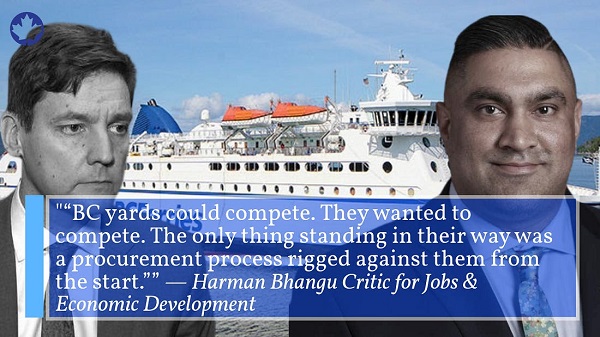
 Business1 day ago
Business1 day agoJobs Critic says NDP government lied to British Columbians and sold out Canadian workers in billion dollar Chinese ferries purchase
-
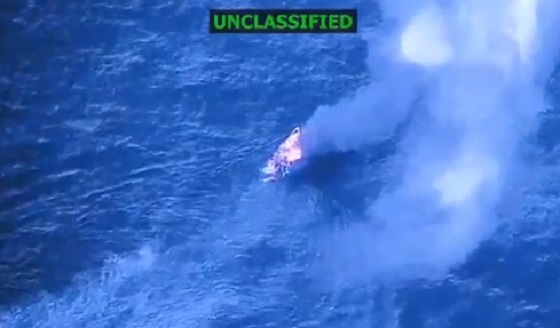
 International2 days ago
International2 days agoTrump says U.S. in ‘armed conflict’ with drug cartels in Caribbean
-

 Indigenous2 days ago
Indigenous2 days agoBloodvein First Nation blockade puts public land rights at risk
-

 Alberta22 hours ago
Alberta22 hours agoJason Kenney’s Separatist Panic Misses the Point
-

 Business1 day ago
Business1 day agoDemocracy Watch Drops a Bomb on Parliament Hill
-

 Automotive19 hours ago
Automotive19 hours agoBig Auto Wants Your Data. Trump and Congress Aren’t Having It.
-
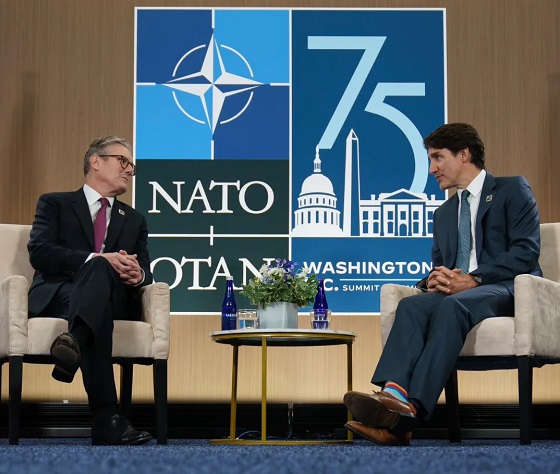
 espionage8 hours ago
espionage8 hours agoStarmer Faces Questions Over Suppressed China Spy Case, Echoing Trudeau’s Beijing Scandals


